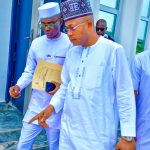Can we have more infrastructure with fewer fiscal surprises?
April 18, 2023
Recent estimates show that low- and middle-income countries (LMICs) will need to invest at least 3.5% of their GDP per year in the electricity and transport sectors to achieve the Sustainable Development Goals while staying on track to keep the rise in global temperature to 2°C.
This investment is significantly higher than the on-budget public investment on electricity and transport in developing countries in 2010-20, which was between 1.2 and 1.8% of GDP. And even when investments through state-owned enterprises (SOEs) and public private partnerships (PPPs) are considered, overall investments still fall short of what is needed.
The triple challenge of heavy debt burdens, the global tightening of financial conditions, and the declining growth rates that LMICs are facing put further pressure on infrastructure sector budgets, increasing the urgency of creating a sustainable fiscal space for infrastructure.
A key to achieving this objective is to avoid, to the extent possible, fiscal surprises that unexpectedly call on fiscal resources.
All modalities of infrastructure provision entail potential fiscal risks. Therefore, coming up with policies to mitigate fiscal surprises and targeting them in areas in which they can have the greatest impact requires answers to some outstanding questions.
Policy makers and practitioners, including us, have been asking these questions for a while: What are the types of fiscal surprises associated with different modalities of infrastructure provision? How large and frequent are the fiscal surprises of infrastructure? How do major macroeconomic shocks affect off- and on-budget infrastructure provision? In the Off the Books report, we present new evidence that answers these questions and more.
Inefficiencies in public spending can lead to delays, cost overruns, and growing investment liabilities.
Developing countries executed only about 70% of infrastructure investment budgets in 2010–18, indicating a potentially significant risk of project delay and cost overruns.
There is also a pronounced capital bias in infrastructure expenditure, especially in the road sector, where the ratio of capital to operating spending is seven times what it should be compared to four times in the electricity sector.
Coupled with expenditure that is not as productive or efficient as it could be, this bias leads to growing investment liabilities because of asset deterioration, which extreme weather events can exacerbate.
Weaknesses in governance can lead to frequent, and sometimes large, calls on public finances from off-budget modalities.
Governments often rely on SOEs to execute and operate infrastructure projects. However, soft budget constraints hurt performance by encouraging SOEs to take excessive risks and sapping their incentive to be efficient.
Using a novel database collected for this report, we show that in 57% of the cases (i.e., country-years) studied, infrastructure SOEs received fiscal injections to remain afloat, with the average annual fiscal injection amounting to 0.25% of GDP.
In some cases, the injections reached as high as 3% of GDP. Power sector SOEs tend to have a better financial performance than transport SOEs, but the former absorbs larger fiscal resources because of their larger size on average.
PPPs aim to address some of the shortcomings of public investment by taking a life cycle perspective to infrastructure provision. However, a large share of PPP contracts is renegotiated, in some cases more than once, leading to a small but frequent drain of fiscal resources.
For example, the annual fiscal cost of renegotiation averages about 0.2% of GDP in the countries we studied. Early termination of PPPs is less frequent than renegotiation but can be costlier. We predicted the fiscal risks from early termination in a sample of developing countries to be 0.1–2.8% of 2020 GDP.
We also find that transport sector PPPs have a higher rate of renegotiation and early termination and are more likely to result in direct fiscal transfers than power PPPs.
In times of crisis, off-budget vehicles can amplify problems
During an economic downturn, on-budget infrastructure spending is expected to be particularly vulnerable to spending cuts. SOEs are sometimes thought to be able to act as countercyclical spending vehicles offsetting the budget cuts.
However, we found that SOEs tend to ask for sizable fiscal injections and cut their capital spending during crises. We also found that fiscal risks from early termination of PPPs increase by an order of magnitude during macroeconomic crises. Instead of acting as a buffer, off-budget vehicles can weaken a country’s overall fiscal situation and amplify the negative macroeconomic shock.
A reform agenda to create sustainable fiscal space for infrastructure
As we discuss in the report, a combination of vulnerability to exogenous shocks and the prevalence of perverse incentives explains the frequency of fiscal risks in infrastructure service provision. So what’s the best approach to tackle these challenges and mitigate the fiscal risks of infrastructure? Global experience suggests four building blocks are especially important, which should be grounded in an effort to build adequate government capacity to ensure success. These are:
Robust integrated public investment management; Effective fiscal and corporate governance of SOEs; Robust PPP preparation, procurement, and contract management framework.
Integrated fiscal risk management
All countries are different. In the report, we present detailed actions under each building block for countries to tailor the reforms according to the sources of risk and the institutional and socio-political characteristics of each country, as well as the government’s capacity.
Upcoming blogs will discuss actions under the different building blocks, so stay tuned for more on this topic.
BY: VIVIEN FOSTERMATIAS HERRERA DAPPEBURAK TURKGULU
Courtesy: Infra4Dev blog series that showcases recent World Bank economic research to explore how Infrastructure is critical for development








